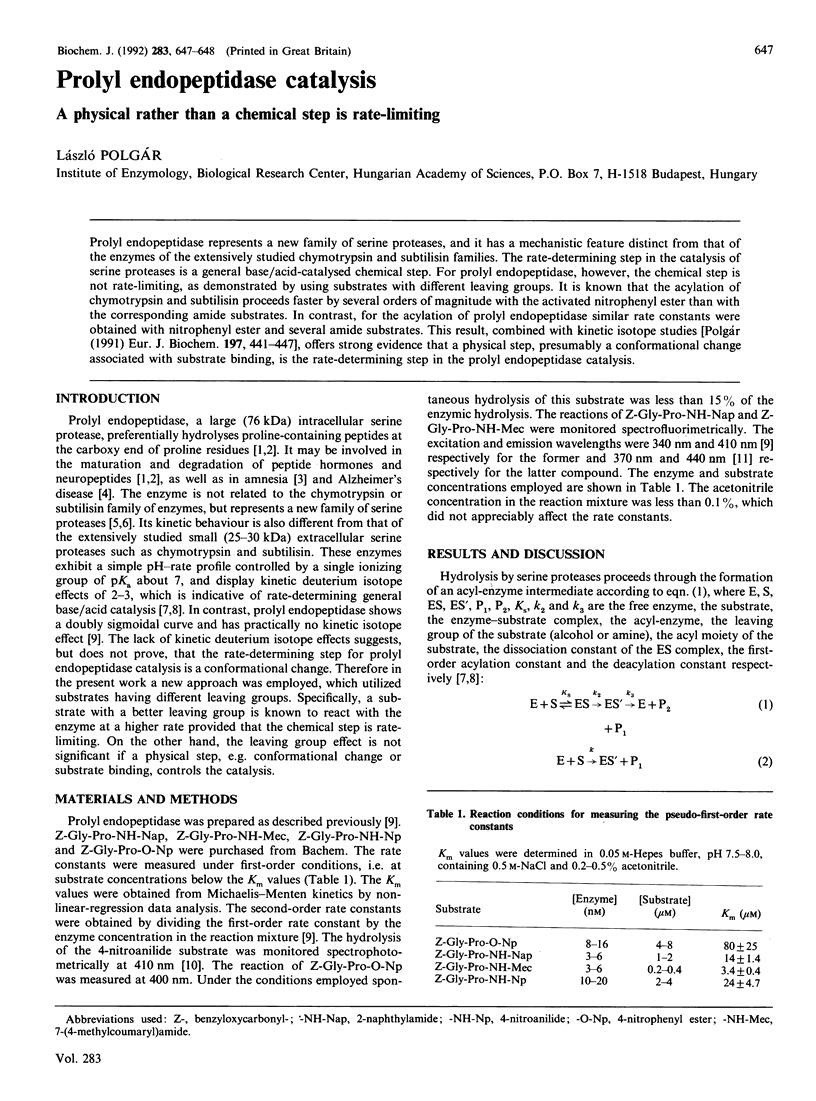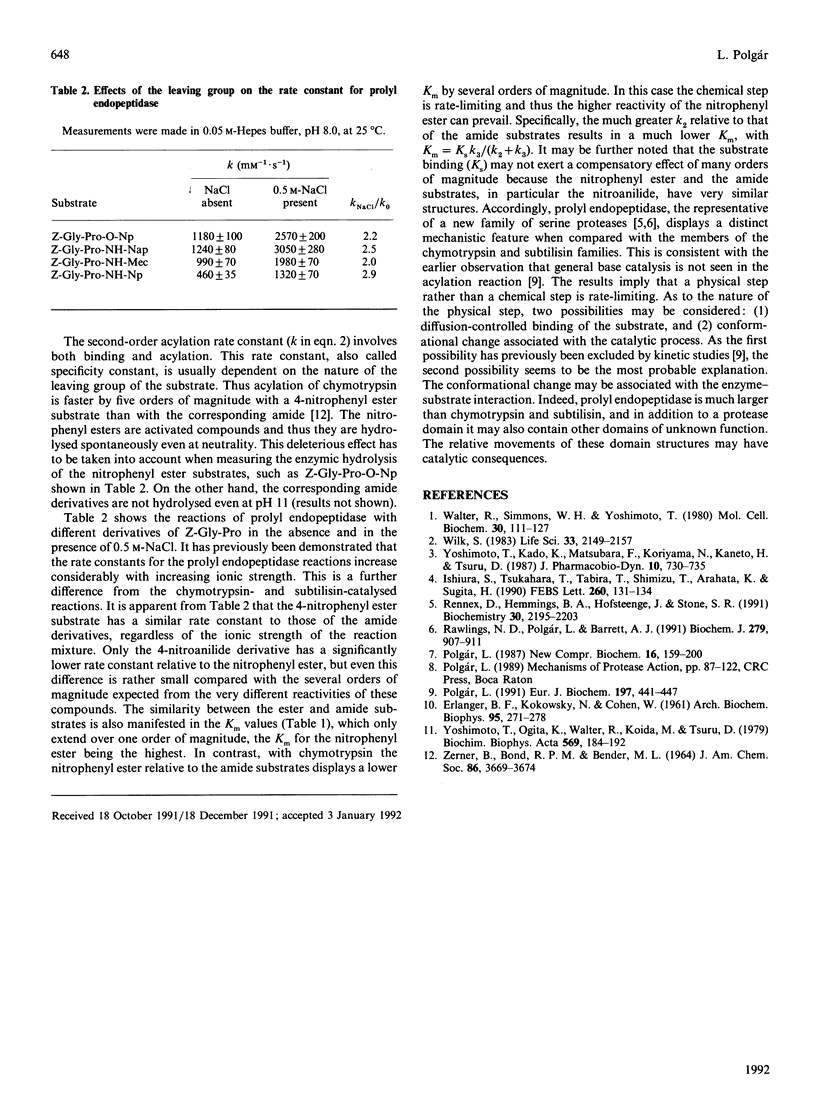Abstract
Prolyl endopeptidase represents a new family of serine proteases, and it has a mechanistic feature distinct from that of the enzymes of the extensively studied chymotrypsin and subtilisin families. The rate-determining step in the catalysis of serine proteases is a general base/acid-catalysed chemical step. For prolyl endopeptidase, however, the chemical step is not rate-limiting, as demonstrated by using substrates with different leaving groups. It is known that the acylation of chymotrypsin and subtilisin proceeds faster by several orders of magnitude with the activated nitrophenyl ester than with the corresponding amide substrates. In contrast, for the acylation of prolyl endopeptidase similar rate constants were obtained with nitrophenyl ester and several amide substrates. This result, combined with kinetic isotope studies [Polgár (1991) Eur. J. Biochem. 197, 441-447], offers strong evidence that a physical step, presumably a conformational change associated with substrate binding, is the rate-determining step in the prolyl endopeptidase catalysis.
Full text
PDF

Selected References
These references are in PubMed. This may not be the complete list of references from this article.
- ERLANGER B. F., KOKOWSKY N., COHEN W. The preparation and properties of two new chromogenic substrates of trypsin. Arch Biochem Biophys. 1961 Nov;95:271–278. doi: 10.1016/0003-9861(61)90145-x. [DOI] [PubMed] [Google Scholar]
- Polgar L. pH-dependent mechanism in the catalysis of prolyl endopeptidase from pig muscle. Eur J Biochem. 1991 Apr 23;197(2):441–447. doi: 10.1111/j.1432-1033.1991.tb15930.x. [DOI] [PubMed] [Google Scholar]
- Rawlings N. D., Polgar L., Barrett A. J. A new family of serine-type peptidases related to prolyl oligopeptidase. Biochem J. 1991 Nov 1;279(Pt 3):907–908. doi: 10.1042/bj2790907. [DOI] [PMC free article] [PubMed] [Google Scholar]
- Rennex D., Hemmings B. A., Hofsteenge J., Stone S. R. cDNA cloning of porcine brain prolyl endopeptidase and identification of the active-site seryl residue. Biochemistry. 1991 Feb 26;30(8):2195–2203. doi: 10.1021/bi00222a025. [DOI] [PubMed] [Google Scholar]
- Walter R., Simmons W. H., Yoshimoto T. Proline specific endo- and exopeptidases. Mol Cell Biochem. 1980 Apr 18;30(2):111–127. doi: 10.1007/BF00227927. [DOI] [PubMed] [Google Scholar]
- Wilk S. Prolyl endopeptidase. Life Sci. 1983 Nov 28;33(22):2149–2157. doi: 10.1016/0024-3205(83)90285-0. [DOI] [PubMed] [Google Scholar]
- Yoshimoto T., Kado K., Matsubara F., Koriyama N., Kaneto H., Tsura D. Specific inhibitors for prolyl endopeptidase and their anti-amnesic effect. J Pharmacobiodyn. 1987 Dec;10(12):730–735. doi: 10.1248/bpb1978.10.730. [DOI] [PubMed] [Google Scholar]
- Yoshimoto T., Ogita K., Walter R., Koida M., Tsuru D. Post-proline cleaving enzyme. Synthesis of a new fluorogenic substrate and distribution of the endopeptidase in rat tissues and body fluids of man. Biochim Biophys Acta. 1979 Aug 15;569(2):184–192. doi: 10.1016/0005-2744(79)90053-6. [DOI] [PubMed] [Google Scholar]


